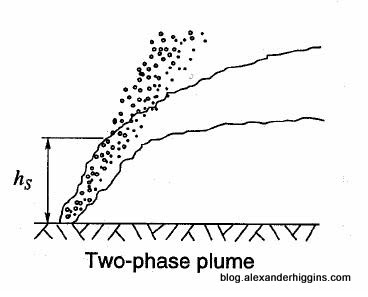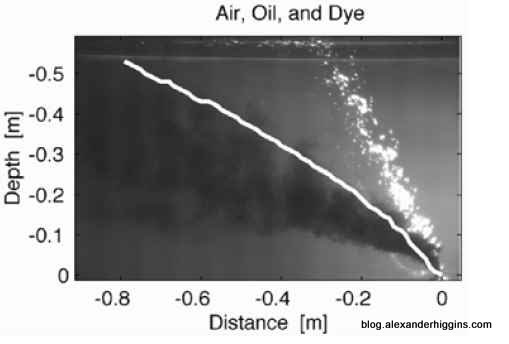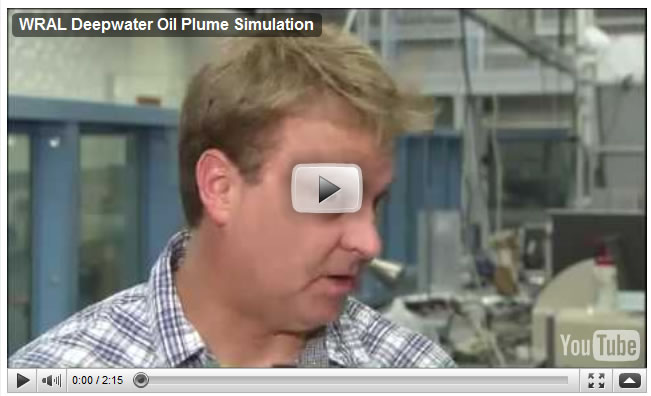Gulf Oil Spill Methane Release and Mass Extinction Events, How Bad Could It Get?
Politics / Environmental Issues Jun 30, 2010 - 04:42 AM GMTBy: Washingtons_Blog
 Tremendous quantities of methane are being emitted by the Gulf oil spill. The methane could kill all life in large areas of the Gulf.
Tremendous quantities of methane are being emitted by the Gulf oil spill. The methane could kill all life in large areas of the Gulf.
However, rumors being spread widely around the Web claiming that the methane could bring on a doomsday catastrophe are not credible.
This essay will attempt to clear up the confusion and convey the facts regarding methane and the oil spill.
Thank Uncle Sam
As a preface, I want to touch on the government's role in this mess.
Many people know that the government has encouraged deepwater drilling for oil by giving huge tax subsidies for deepwater drilling.
As the Los Angeles Times writes:
Some say the Gulf of Mexico catastrophe can be linked to Congress' policy of oil-friendly tax breaks and financial benefits.
***
At issue was the 2005 Energy Policy Act — the largest energy bill in years. The committee chairman, Rep. Joe L. Barton (R- Texas), a friend of the industry, had saved some big issues for the end: billions of dollars in tax and royalty relief to encourage drilling for oil and gas in the Gulf of Mexico and other offshore areas. There was even a $50-million annual earmark to support technical research for the industry.
***
The royalty waiver program was established by Congress in 1995, when oil was selling for about $18 a barrel and drilling in deep water was seen as unprofitable without a subsidy. Today, oil sells for about $70 a barrel, but the subsidy continues.
The Government Accountability Office estimates that the deep-water waiver program could cost the Treasury $55 billion or more in lost revenue over the life of the leases, depending on the price of oil and gas and the performances of the wells.
***
Oil companies won a lawsuit last year requiring the government to pay back $2.1 billion in royalties from previous years, including about $240 million to BP.
An increasing number of analysts say the waiver program has pushed drilling into fragile and remote areas where emergency response plans were inadequate.
"If it wasn't profitable for them to do it, then that's a good argument for leaving the oil in the ground," said Robert Gramling, who studies the history of the oil industry at the University of Louisiana, Lafayette. The government-subsidized rush to deep-water exploration led to a situation where the industry was doing "things that were technically possible but were beyond our ability to undo them if we find out we have a problem."
But most people don't know that the government has actively encouraged drilling for methane in the Gulf of Mexico as well.
For example, Congress passed the Methane Hydrate Research and Development Act of 2000 "to promote the research, identification, assessment, exploration, and development of methane hydrate resources...."
The Energy Policy Act of 2005 also provided government support for methane hydrate research, exploration and development - including in deep water.
The Department of Energy has actively encouraged deepwater drilling for methane hydrates.
Indeed, this has specifically included support for deepwater drilling for methane in the Gulf of Mexico. See this, this, this, this, this,
In fact, the government, oil industry and academia have been exploring the high methane content in the Mississippi Canyon area of the Gulf of Mexico - where the spill is occurring - for years.
Unprecedented Release of Methane
As CBS notes:
The oil emanating from the seafloor contains about 40 percent methane, compared with about 5 percent found in typical oil deposits, said John Kessler, a Texas A&M University oceanographer who is studying the impact of methane from the spill.
As Kessler also points out:
This is the most vigorous methane eruption in modern human history.
A U.S. scientist says that methane levels in the Gulf are "astonishingly high", that 1 million times the normal level of methane gas has been found in some regions near the oil spill, high enough to create "dead zones" devoid of life. Methane depletes oxygen, and the scientist noted:
At some locations, we saw depletions of up to 30 percent of oxygen based on its natural concentration in the waters.
Another scientist writes:
Researchers studying the [plumes] have found concentrations of methane up to 10,000 times greater than normal and oxygen levels depleted by 40 percent below normal.
This unprecedented release of methane into the ocean kill all life within large swaths of the Gulf of Mexico.
Global Warming
NASA has found that methane is 33 times more potent than carbon dioxide in causing global warming.
Many scientists have said that methane releases have caused past warming spells. See this,. Indeed, methane has such a powerful effect on climate that scientists believe that woolly mammoth farts gaseous emissions are responsible for warming the Earth 13,000 years ago.
As Nature wrote last year:
The Siberian Shelf alone harbours an estimated 1,400 billion tonnes of methane in gas hydrates, about twice as much carbon as is contained in all the trees, grasses and flowers on the planet. If just one per cent of this escaped into the atmosphere within a few decades, it would be enough to cause abrupt climate change, says [Natalia Shakhova, a biogeochemist at the University of Alaska, Fairbanks, and one of the leaders of the Siberian Shelf study].
The Associated Press points out:
Estimates from the U.S. Geological Survey's "flow team" [are] that 2,900 cubic feet of natural gas are escaping for every barrel of oil.
Assuming 100,000 barrels of oil a day are spewing from the Gulf, that would mean that 290,000, 000 cubic feet of gas is escaping a day, and 105,850,000,000 cubic feet of methane is escaping a year.
That's 105 billion cubic feet a year. That's a very large number.
However, as the Guardian notes:
The new study, published in the journal Science, shows that methane emissions from the Arctic increased by 31% from 2003-07. The increase represents about 1 [million] extra tonnes of methane each year. Palmer cautioned that the five-year increase was too short to call a definitive trend.
***
[Researchers] found that just over half of all methane emissions came from the tropics, with some 20 [million] tonnes released from the Amazon river basin each year, and 26 [million] tonnes from the Congo basin. Rice paddy fields across China and south and south-east Asia produced just under one-third of global methane, some 33 [million] tonnes.
As Scientific American notes:
440 million metric tons of methane [are] emitted worldwide each year from a combination of human activities and natural sources like rotting plants in wetlands, termites and wildfires.
1 ton of liquefied methane equals approximately 16 barrels or 50,000 cubic feet of natural gas, depending on methane content (Natural gas contains between 75 and 90 percent methane by volume. Natural gas used by consumers is composed almost entirely of methane. However, natural gas found at the wellhead, although still composed primarily of methane, is not as pure. )
So using a rough calculation, 440 million metric tons equals approximately 2.2 × 1013 or 22,000,000,000,000 cubic feet.
That's 22 trillion cubic feet a year ... 210 times bigger than the amount of methane being released from the Gulf oil spill.
So the bottom line is that the methane gushing out from the broken oil equipment is adding to the worldwide methane output, but constitutes less than one-half of one percent ... which would normally be considered a statistical rounding error.
Remember, these are very rough estimates which are certain to be somewhat off. I hope that an expert can provide better estimates, and correct any erroneous assumptions which I made. But the estimates still provide some sense of scale and context.
(Note also that Iceland's volcanoes are probably going to throw a lot of ash into the air. This could have a cooling effect which offsets any warming from the Gulf methane release.)
Look Out Below!
Methane released deep underwater might not even make it to the atmosphere.
As Newsweek points out:
The latest science suggests that relatively little, if any, methane hydrate is currently degassing, amounting to at most 2 percent of global methane emissions, and much of that may not even be entering the atmosphere. Most of the degassing hydrate would be deep underwater, so the methane that’s released can get dissolved in the water or chewed up by certain microbes before it reaches the surface.
David Valentine of the University of California, Santa Barbara, agrees:
"Although methane from surface-vessel spills or shallow-water blowouts escapes into the air, I expect that the vast majority of methane making the long trip to the sea surface from a deep water spill would dissolve," Valentine wrote. "Unlike oil, methane dissolves uniformly in seawater. And the tools are available to measure it accurately and sensitively."
As Alexander Higgins points out:
[A] study called Project “Deep Spill” ... debunks the lie that the methane gas being released from the well is floating to the surface and not being absorbed into the sea.
The study analyzed a wide range of controlled releases at different depths below the sea surface of different types of oil found all over world to help better understand the flow of hydrocarbons released from a deepwater blowout.
One of the studies, called DeepBlow, released 10,000 barrels of oil per day at a depth of 800 meters which is less than half of the depth of the Deepwater Horizon blowout.
The basic findings of that study has been recreated by scientists from the University of North Carolina.
In their research the scientists simulated of the formation of the underwater oil plumes that are created during deepwater blowouts.
Watch The University of North Caroline Simulation Shows How Oil Released Underwater Forms Plumes
While the University of North Carolina simulation gives you a basic understanding of how deepwater blowouts create oil plumes it does not fully account for all the findings of Project “Deep Spill”.
In particular the final report of Project “Deep Spill” found:
-
Only 2% of the oil released in a deepwater blowout may actually make it to the surface. That’s as little as 2% naturally without the use of dispersants. Add dispersants into the equation and it could be less then one percent of oil that makes it to the surface.
-
None of the methane released from the deepwater blowout made it to the surface. The study found that released natural gas may dissolve completely within the water column if it is released from a deep enough depth relative to the gas flow rate.
From the study of the 800 meter release:
Echo sounders provided efficient tracking of oil and gas releases in the field and showed that the gas was completely dissolved before it could surface.
DeepBlow does not include hydrate kinetics, and hence, under hydrate forming conditions, the model predicts solid hydrate particles. Not only is the mass transfer from such particles slower than from gas bubbles, but also hydrate density is closer to that of water than that of natural gas, substantially reducing plume buoyancy.
-
The buoyant parts of the oil released in a deepwater blowout split from the main plume within the first 200 meters of release. Those buoyant parts, which represent only a small portion of the total amount of oil, turn into small droplets that float to the surface.
Here is a graph from the study showing this process.

Deepwater oil release – Buoyancy particle separation graphHere is an image that captures the separation process

Deepwater oil release – Buoyancy particle separation simulation -
Within the first 100 to 200 meters from the source of the release the the majority of the oil loses its buoyancy and stops rising. This majority of the oil remains submerged in an underwater plume that is then carried away by subsurface currents.

The fact that much of the methane released from the Gulf oil spill won't make it to the surface is good for those worried about global warming, but bad for the marine life. Remember as discussed above, methane depletes oxygen, and thus kills everything in the ocean.
Methane Explosions
There is speculation on the Web that the methane being released from the oil spill will cause a tsunami or a firestorm.
It is true that one scientist speculates that methane bubbles released from the seafloor have caused extinction-level events in the past.
But the odds that the release of methane from the leaking oil will cause a tidal wave or a firestorm are infinitesimally small.
There are many real things to worry about - such as the destruction of the Gulf ecosystem, and the threat to human health from toxic chemicals in the oil and dispersants.
Tidal waves and firestorms are not worth worrying about. And - unlike the destruction of the ecosystems and the threat to human health which we can do something about (by stopping the use of Corexit dispersant and using proven clean-up and containment methods) - there's nothing much we can do about such low-probability Armageddon scenarios.
Global Research Articles by Washington's Blog
© Copyright Washingtons Blog, Global Research, 2010
Disclaimer: The views expressed in this article are the sole responsibility of the author and do not necessarily reflect those of the Centre for Research on Globalization. The contents of this article are of sole responsibility of the author(s). The Centre for Research on Globalization will not be responsible or liable for any inaccurate or incorrect statements contained in this article.
© 2005-2022 http://www.MarketOracle.co.uk - The Market Oracle is a FREE Daily Financial Markets Analysis & Forecasting online publication.




